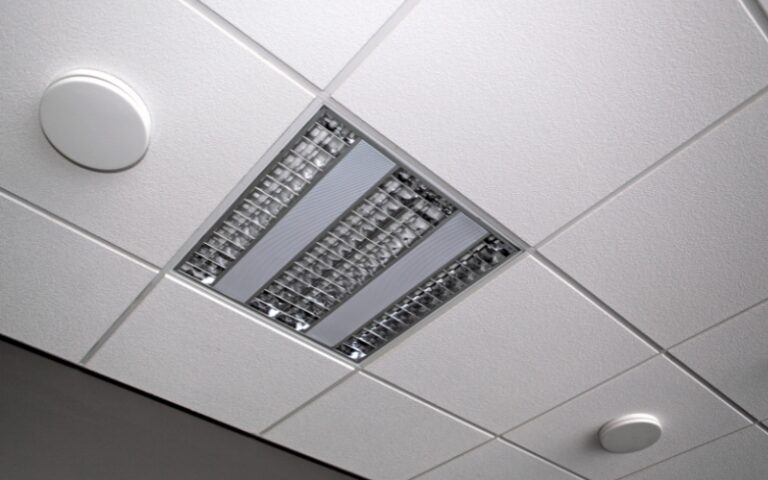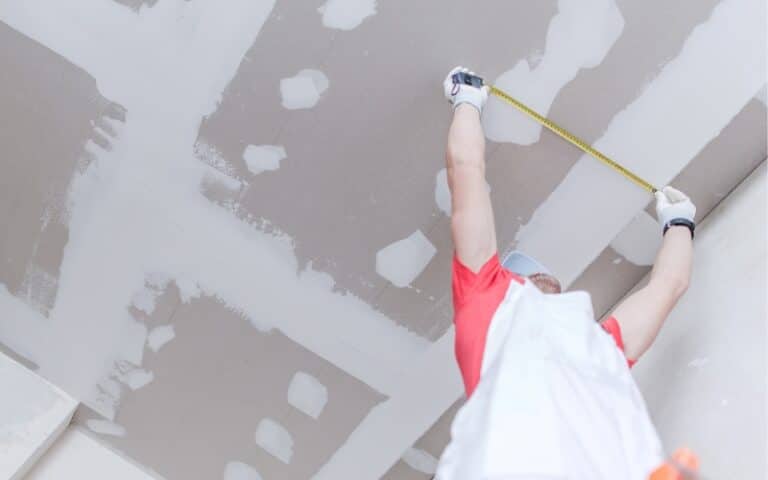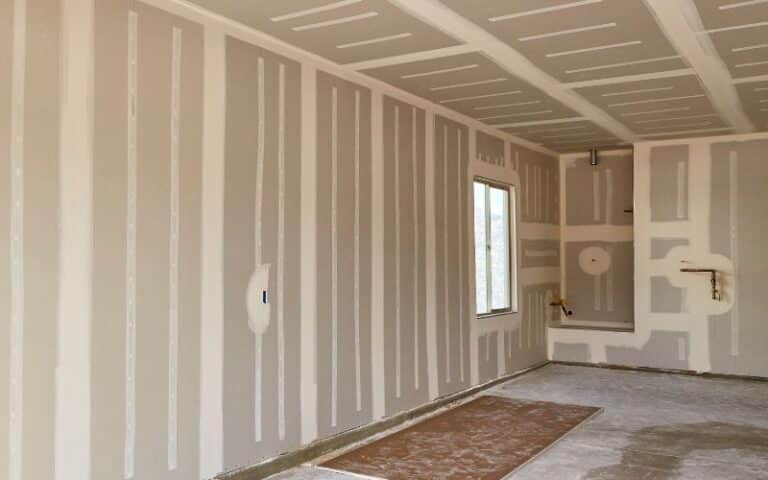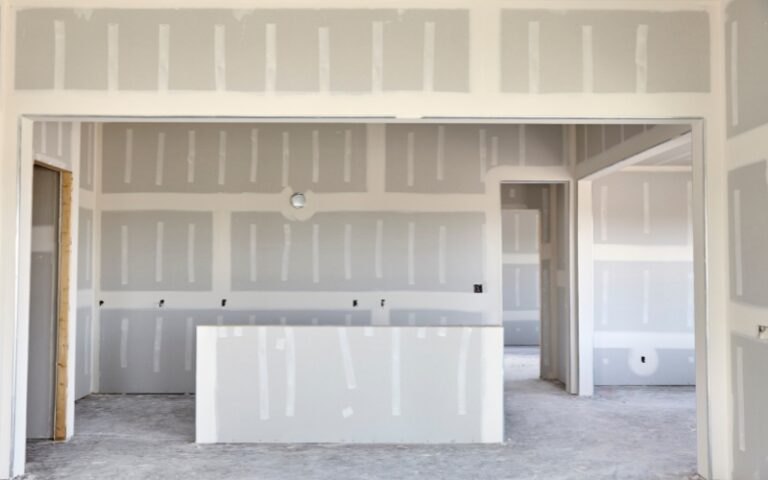Electrical components need proper installation to prevent malfunction, damage, and continuous discharge.
A ceiling fan box is an electrical part that mounts next to flammable materials in the ceiling.
This location can be dangerous if the electrical constituents in the box start discharging.
Improper installation of such a malfunctioning box can start fires on the ceiling. Hence, knowing the right way to install a ceiling fan box is important.
It’s critical to mount a ceiling fan box so the exterior edges are even with the drywall. The required depth of the box’s edges is under 6mm or a quarter-inch from the ceiling’s surface. This installation method will prevent any electrical accidents that will cause fire outbreaks.
Reading on, you’ll understand why it’s essential for the ceiling fan box installation to be level with drywall.
Also, you’ll learn the proper way of safely mounting a ceiling fan box so it’s flush with the ceiling’s surface.
Ready for a Drywall Quiz?
Should the Ceiling Fan Box Be Flush With Drywall?
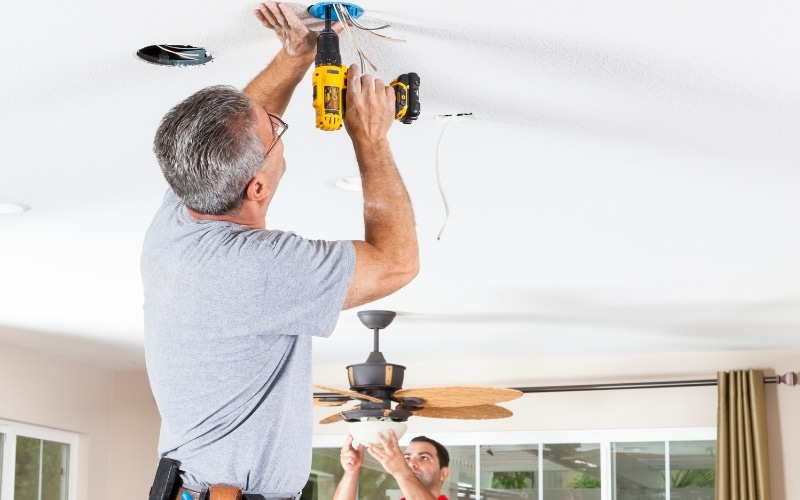
You have to install a ceiling fan box so it’s even with drywall. A ceiling fan box has wires and other electrical components. At any moment, a malfunction can spark a fire.
The reason for mounting the ceiling fan box to be level with drywall is to avert electrical fires. Regular drywall is a gypsum product, but it isn’t fire-resistant enough.
The material is still flammable; therefore, it’s essential to be cautious. The National Electric Code is a manual for electricity safety regulations in the United States.
It mentions that electrical boxes mounted near materials like gypsum must have their outer edges recessed, not over a quarter inch.
Most times, fire outbreaks occur because of bad electrical box installation.
When the box is flat with the wall, it reduces the chances of electricity arcing from the electrical components to the wall.
An electric arc is a situation where current discharges unceasingly. For example, if the material on the wall is flammable, electricity can arc unto the material and start a fire.
Therefore, it is always critical to maintain the 6mm depth when mounting a ceiling fan box.
What Is the Proper Way to Install Ceiling Fan Box In Drywall?
Mounting a ceiling fan box requires skill and practicing safety. One must also adhere to the National Electricity Code guideline when installing the ceiling fan box.
The following items are some of the things you need to help install the ceiling fan box.
| Items | Uses |
|---|---|
| Screwdriver | For tightening screws. |
| Drill | To drill holes if needed. |
| Ladder | For reaching the ceiling. |
| Pry bar | It helps to remove the existing box from the ceiling. |
| Hammer | To loosen the existing box in the ceiling. |
| Flashlight | Provides visibility inside the ceiling. |
| Wrench | To tauten the brace. |
| Fan-rated box | To fix inside the ceiling. |
When installing a ceiling fan box, the first thing is to examine the previous one, if it exists.
Next, turn off the circuit’s power and test to affirm that no energy is flowing into the box. If there is no power, pull out the ceiling box to make room for the new one.
The following steps will guide you in removing the previous ceiling fan box.
#1. Loosen the Box
You can slice the drywall concealing the old ceiling box with a knife. A wall stud usually holds the ceiling box with nails or screws.
You must hammer a 2 X 4 block of wood into the wall stud to slacken the box.
#2. Pry the Box
Fix a level pry bar in-between the wall stud and the ceiling box and pry it off the wall stud. You might also have to pull off a staple fastening a wire to the wall stud.
Ensure that you work safely so you don’t mutilate the ceiling.
#3. Pull Out Box and Wire
Use the pry bar to pull out the nails or screws holding the box and bring it out. Sever the wire from the ceiling box.
There’s a slot for the wire to slip into; push the tab holding it to release the wire. If the ceiling box has a wire clamp, pull out the locknut.
#4. Mount Brace for New Ceiling Fan Box
Fix the brace inside the ceiling hole. Next, spin the brace’s shaft left to right till it contacts a wall stud at each side. The brace’s teeth should hold the wall studs firmly.
Ensure that the box’s edge must have a recess of a quarter inch inside the ceiling. With this installation technique, the drywall will be even with the ceiling fan box.
#5. Screw In the Brace
Screw in the brace using a wrench, then fix the U-bolt into the mount. The brace should be in the middle, with bolts pointing to the ground.
Weave the wire through the ceiling box, then push the ceiling box into the U-bolt and screw in the nuts.
#6. Install the Bracket
The next step is to fix the support bracket in the electrical box. Ensure that you use the manufacturer’s directives for installation.
Weave the wires inside the support bracket’s center. However, leave the support screws on the electrical box for a ceiling fan with a slip-on rack.
You need to slip on the bracket atop the support screws and tighten them. Also, there are fans without a slip-on rack.
For this fan, position the bracket over the support screws that stab through it and fasten it using the available nuts.
You can follow the following tips to know if the electrical box can hold your ceiling fan.
#7. Support Necessities
The NEC demands that fans weighing over 35 pounds or above have an electrical box marked to hold ceiling fans.
The electrical box’s manufacturer must indicate on the box that it supports ceiling fan fittings. Only install a fan if you get a box with this indication.
#8. Ceiling Fan Box Design
Electrical boxes for fans feature braces that are arms holding onto adjacent wall studs. These braces also accommodate bolts or nails so they can attach to the wall studs.
A threaded rod in the fan’s box’s middle should let the box move alongside the brace.
If you’re not knowledgeable about the kind of electric box you need, you can ask an electrician for guidance.
Is It Safe to Install a Ceiling Fan Box That is Not Flush With the Drywall?
Installing a ceiling fan box that is not flush with the drywall can lead to potential safety hazards. It is crucial to ensure a secure mount by using ¼ inch drywall on ceilings. This proper installation method ensures stability, minimizes the risk of the box detaching, and provides a safe environment for both the fan and occupants of the space.
Should the Ceiling Fan Box Be Recessed or Extended?
The nature of the ceiling determines if the ceiling fan box should be recessed or extended.
A drywall ceiling requires the ceiling fan box to be recessed a quarter inch. The reason is because of the drywall thickness.
If you fix the ceiling fan using that measurement, the fan box will be even with the drywall.
You will only use this measurement when your ceiling has extra layers like drywall. If not, you won’t need to recess the ceiling box.
Note that a fan box is recessed when there’s drywall to avoid electricity arcing. Electric arcing is less likely if the ceiling fan box is even with the ceiling.
With electricity, you can’t predict; any moment can produce a spark that can build up to a continuous discharge.
If the ceiling box isn’t level with the ceiling, a continuous discharge in the box can start a fire. Recessed installation reduces the chances of this happening.
FAQs
Can I Use an Extended Ring or Box for a Ceiling Fan?
There’s no extended box that’s suitable for a ceiling fan. You’ll have to find a way to reinstall the electric fan box lower or use the right ceiling box size.
What Size Hole Do I Need to Install a Ceiling Fan Box?
You can slice a 4-inch diameter hole in the drywall. This size should be enough to mount the fan box and the support bracket.

